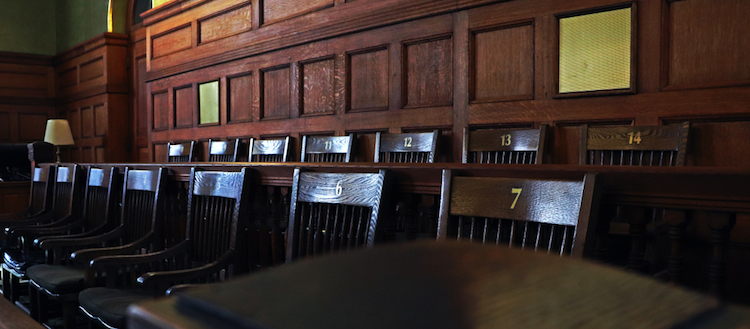Study examines decline in civil and criminal jury trials and how to bring them back

Image from Shutterstock.com.
While judges and lawyers view jury trials as slower, less predictable and less cost-effective than other forms of case resolution, they also view them as fair and prefer them over alternatives, according to a national study released in December by the ABA Commission on the American Jury.
The study, titled “Reasons for the Disappearing Jury Trial: Perspectives from Attorneys and Judges” and published in the Louisiana Law Review, additionally showed that most judges and attorneys view jury trials as worth the costs associated with them.
“The right to a jury trial in criminal and civil cases is guaranteed by the U.S. Constitution, but jury trials have been vanishing for decades,” ABA President Patricia Lee Refo said in a Dec. 18 news release. “This new study again confirms what other ABA studies have long shown—that our laws and customs need a fresh look to ensure that jury trials, a cornerstone of the American justice system, do not disappear altogether.”
Its co-authors—Shari Seidman Diamond, a professor at the Northwestern University Pritzker School of Law, and Jessica M. Salerno, an associate professor of psychology at the Arizona State University—asked 1,460 judges and attorneys to evaluate potential sources of the decline in jury trials, as well as factors that could slow down or reverse their disappearance.
“The ABA Commission on the American Jury was aware of and concerned about the drop in jury trials, both on the criminal and civil side,” says Diamond, who is a special adviser to the commission. “So the question was: What were the causes of those? That was the initial impetus for the study because people have suggested a variety of different reasons.”
In federal courts, civil case filings have increased since the early 1960s, but the percentage of civil cases disposed of by jury trial has decreased from about 5.5% in 1962 to 0.8% by 2013, according to a 2016 book referenced in the study.
Similarly, the percentage of criminal cases disposed of by jury trial in federal courts decreased from about 8.2% in 1962 to 3.6% by 2013.
In addition to asking judges and attorneys to rank four procedures used to resolve civil cases—arbitration, mediation, jury trials and bench trials—and two procedures used to resolve criminal cases—jury trials and bench trials—the study examined the possibility that litigants are pressured to settle their cases.
Lawyers perceived plaintiffs attorneys, mediators and judges as significant sources of pressure on plaintiffs to settle in civil cases, while judges did not view themselves or their peers as a frequent source of pressure.
Judges who handle criminal cases identified defense attorneys as the largest source of pressure on defendants to plead guilty before trial, while nearly half of criminal defense attorneys perceived themselves, judges and defendants’ family members to be sources of pressure.
For Diamond, these were among the most surprising results of the study.
“The particularly troublesome findings are that we identified a number of sources of pressure on people to forgo their right to a jury trial,” she says. “When you see that as not so much as an incentive to take other routes but a deterrence from exercising your constitutional rights, that is worrisome.”
In gauging the most common causes of the decline in civil jury trials, respondents indicated that damage caps and mandatory binding arbitration have had the greatest influence in reducing trial rates. On the criminal side, they viewed mandatory minimums as the primary force behind reducing jury trials, with defense attorneys also citing sentencing guidelines as an additional factor.
As a result, the study’s co-authors suggested eliminating or raising the level of damage caps, eliminating mandatory arbitration, reforming sentencing guidelines and abolishing mandatory minimums.
“The things that truly pushed people to waive their right to a jury trial were the things that we identified as needing to be changed,” Diamond says. “That is, the involuntary sorts of pushes.”
“But there were also some findings that suggested that we need to learn more about litigants, both on the civil and criminal side, in terms of how they perceive the process,” she adds.
Write a letter to the editor, share a story tip or update, or report an error.


